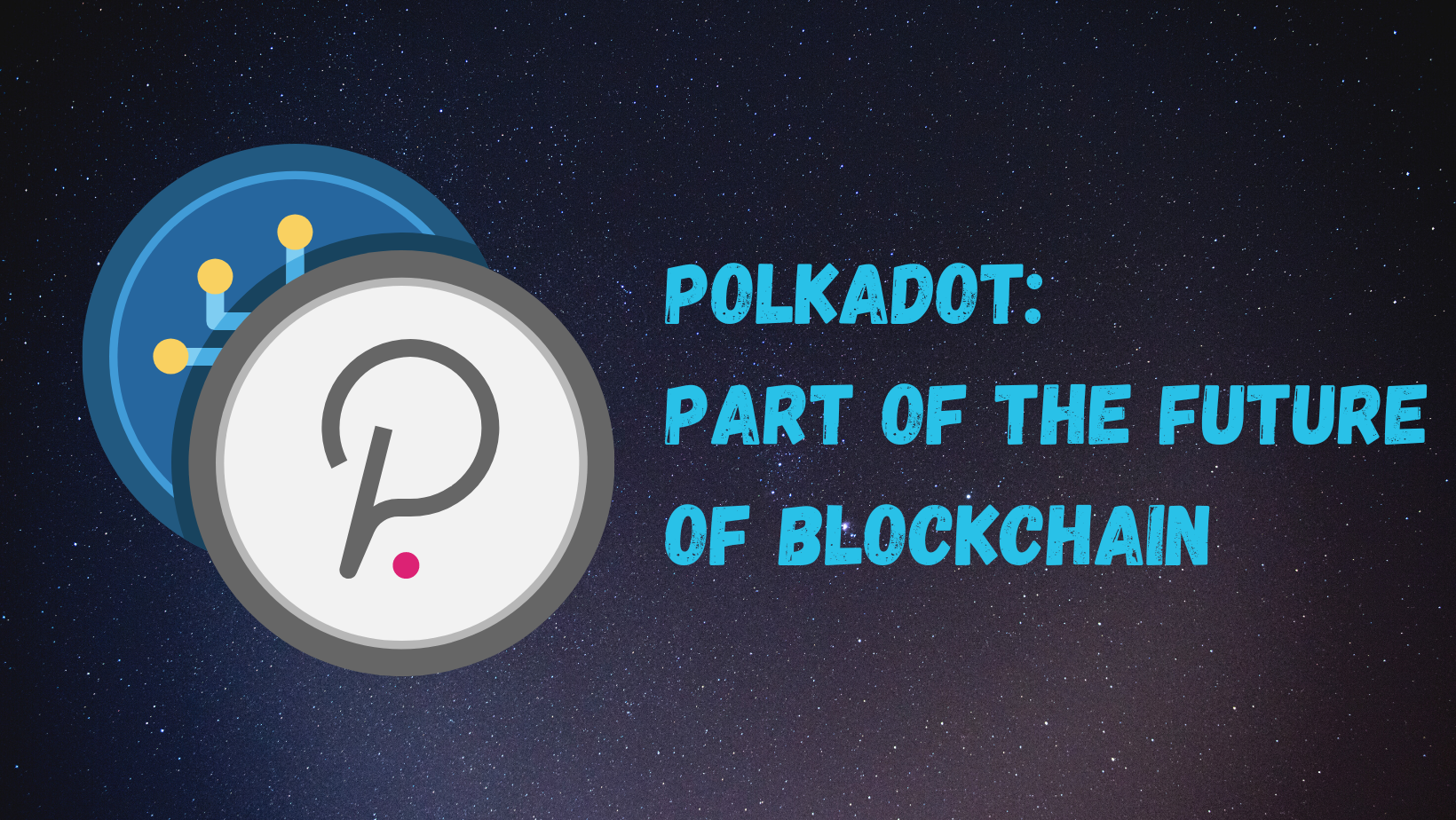Three Reasons Why $DOT (Polkadot) is Part of the Future of Blockchain
Polkadot is an amazing project which has enormous influence on blockchain development. Here’s three reasons why.

Polkadot is an amazing project which has enormous influence on blockchain development. Here’s three reasons why.
I’ve been following $DOT (Polkadot) for several years now. It’s a fascinating project with enough history to demonstrate it’s viability. With the completion of the first Parachain Auction, I feel like it’s time to outline three reasons I think it’s an incredible project which is part of the future of blockchain.
Full transparency: I am also an investor in $DOT through their tokens. If you’re using this article to inform you own investing decisions, you should consider this advice general in nature, and continue doing your own research. I’ve provided links to the research I’ve used where relevant.
If you’ve spent more than 10 minutes researching blockchain, you’re probably starting to wonder (no, I’m not talking about the ‘What the heck is going on’ question…)
You’re probably asking: “How do these all work together?”
It’s a great question. There’s some incredible technology out there. There’s blockchains with astonishing speed (Transactions Per Second or TPS) like Solana — currently running right now at ~2,700 TPS (capable of >50k), compared to Visa’s ~6532 TPS (data calculated in linked article). There’s blockchains with really really interesting use cases like PowerLedger and their electricity power sharing concept. There’s a whole host of blockchains which are reimagining traditional services in the era of Programmable Money. Many of them will be incredibly successful. Many won’t.
The problem is that they need to work together.
For Web 3.0 to truly remake the world, there’s got to be a way for all these projects to work together. Seamlessly, securely, and above all consistently.
Polkadot recognised this right from the start. They recognised that rather than ‘one blockchain to rule them all’, it was more likely that there would be specific blockchains which solved specific use cases. As a result, Polkadot was designed from the ground up to share data.
It’s an impressive display of humility and wisdom which embeds Polkadot into the future of Blockchain.
I’m a big believer in ‘built in security’. As a Cyber Security Incident Responder, with experience doing forensics, malware reverse engineering and leading teams, I’ve seen the terrible impact when these things are missed.
As a business owner, I also know the enormous resource crunch projects experience. The temptation and pressure is always there to take the short term win because that means you’ve got the money for the next challenge. Faced with spending an extra few thousand dollars on solving a Cyber Security problem vs having assurance you can pay next weeks bills can be a definite moment of insight into your true priorities!
It’s critical we get security right in blockchain. As a decentralised trust model where trust is in the underlying blocks of data and their veracity, blockchain must lead the way in effective security of the projects being used. It’s our best way of becoming the vehicle of choice for entrepreneurs, businesses and people.
Built in security helps solve this dilemma. It’s an ‘environmental fix’ which creates a more secure place for developers and dreamers to operate, with the added advantage that there’s one less worry for participants.
Polkadot is leading the way in this space. Every parallel chain (Parachain) which operates on Polkadot has access to a shared security model right from the start — a huge advantage compared to many other projects. Even more impressively, Polkadot is investigating ways to lease this security model to participants (called Parathreads), thereby helping secure a significantly larger portion of the blockchain universe.
There’s still plenty to develop in this space, especially as we start to build out Cyber Security within blockchain, but Polkadot seems to be way out in front. It’s a great move which helps to embed Polkadot within the future of blockchain.
Ever had those times when you turn on your computer and get met with the infamous “Count down to an upgrade” message? I don’t know about you, but I often resign myself to 2 hours of my life I’ll never get back.
Blockchain feels a bit like this. The number of times a blockchain goes down, forks or is somehow rendered inoperable due to an update/upgrade is quite honestly astonishing.
If we want to truly create a Web 3 centric world, we’ve got to stop this. The more we build our economic models upon blockchain, the more reliable they’ve got to become.
We’ve got to hit something like 99.999999% reliability. Better than anything currently out there.
This is a real challenge. There’s a whole host of reasons to push updates. Security updates, new ways of doing business, speed/efficiency improvements and so on. Somehow we’ve got to find a way to be more reliable than legacy centralised software companies, while also solving the problems they’ve been experiencing forever.
You did say you were up for a challenge right?
Polkadot has been working on this problem from the start. They call it ‘Upgradability’, and it’s off to a promising start. It’s an approach that will yield incredible benefits, making Polkadot able to keep up with the latest improvements on an ongoing model.
If you take a step back and consider the combination of the three reasons I’ve outlined, you might see a positive feedback loop developing:
This is one of the greatest reasons I’m such a fan of Polkadot. The combination of wisdom, humility and foresight has created an environment which I’m confident creates enormous preconditions for success.
It’s by no means a guarantee, but I certainly feel it is worth a look into.
Follow me for more of my thoughts ❤